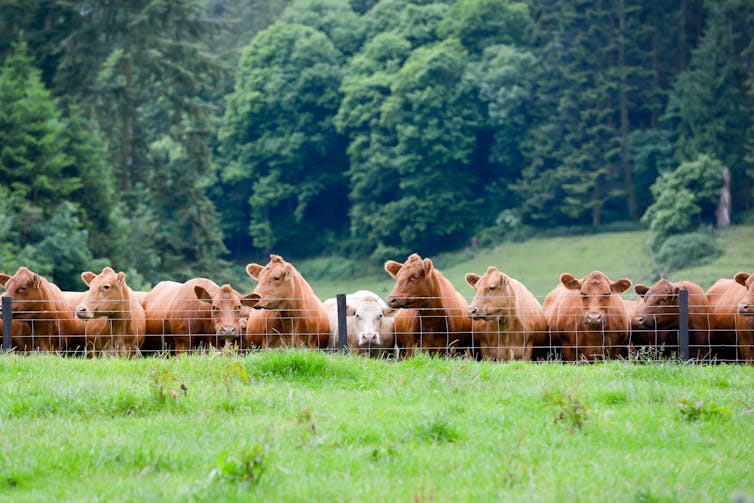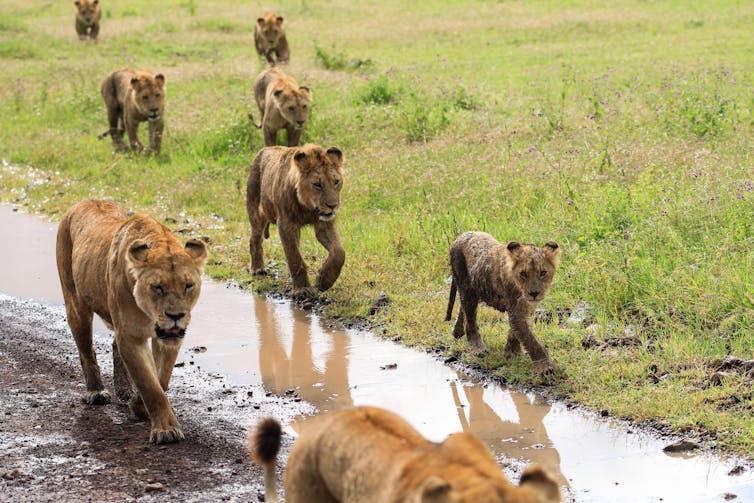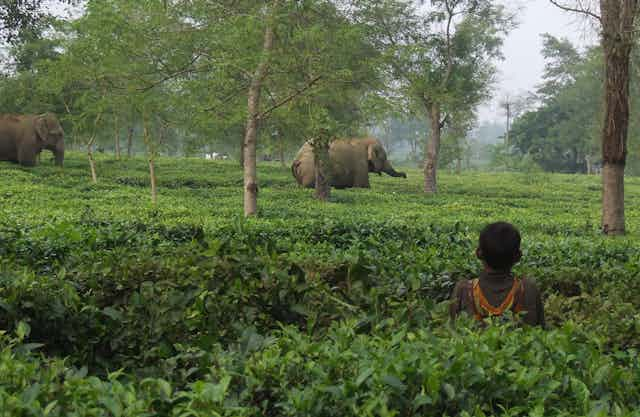The 196 countries meeting for the UN Convention on Biological Diversity conference (COP15) in Montreal, Canada, are negotiating a new set of targets for reversing the loss of Earth’s biodiversity. They have set themselves a formidable challenge: ensuring humanity is “living in harmony with nature” by 2050.
As part of this aim, and for the first time in an international agreement, nations are also being asked to work towards resolving human-wildlife conflict. When Swiss farmers fear losing livestock to rebounding wolf populations or the return of tigers threatens communities in Nepal, conservation can reach an impasse. These conflicts magnify the costs of biodiversity to local people – and, when left unresolved or handled badly, fuel tensions that erode support for protecting nature more broadly.
Standing by to help is the International Union for the Conservation of Nature (IUCN)‘s Human-Wildlife Conflict and Coexistence Specialist Group – a global expert body which I chair. We convene the best knowledge available and are producing global guidelines and hosting a three-day international conference on managing these kinds of conflict in Oxford from March 30 next year.
Resolving conflict and achieving coexistence is far from easy. While all human-wildlife conflicts revolve around the risks that animals can pose to human interests – and the persecution of those animals in retaliation – these situations also provoke disagreements among groups of people. For example, although wolves can and do occasionally kill sheep in Europe and North America, conflict primarily arises between those who want to cull wolves and those who want to protect them. Tensions escalate, mistrust and divisions ensue and each group becomes increasingly entrenched in its view of the situation, blocking progress.

Because of this, resolving conflicts about wildlife is not a simple matter of installing fences, lights or noisemakers to keep animals away from crops, property or livestock. Resolving human-wildlife conflicts means resolving divisions and disharmony between people. This, more than any fence, is ultimately what makes coexistence possible. This means identifying any underlying grievances and addressing these through dialogue, engaging everyone involved in a joint agreement.
Without this groundwork, any practical measures outsiders suggest to communities for keeping wildlife at bay are likely to be poorly implemented or rejected altogether.
Measuring what matters
Following COP15, each country dealing with human-wildlife conflict at home will need technical and financial support to manage it. They will also, once the new agreement comes into effect, be required to track and monitor their progress towards all of the newly agreed targets, including that of “…minimis[ing] human-wildlife conflict for coexistence”. For this, a standard set of measurements called indicators are needed – which are also still under negotiation.
Yet here lies another challenge: countries deal with unique situations, ranging from maintaining coexistence with crocodiles in India to managing disputes over bats in Mauritius. Countries need to apply locally appropriate and culturally sensitive approaches to resolve these conflicts, while at the same time monitoring their performance in a globally standardised and comparable way.
Exactly how this should be done remains a sticking point in these negotiations. Just as resolving conflicts is not as simple as putting up barriers between wild animals and people, merely counting how often a crop is trampled by elephants or how many lions are shot in retaliation for preying on cows is insufficient. If the aim was only to reduce those numbers, then the simplest solution would be to remove all the animals or all the people – but that wouldn’t be coexistence. Rather, the aim must be for communities to balance the costs and benefits of living with wildlife, and for divisions between groups to be reconciled.

Although countries will need to track incidences of damage or loss, compensation claims, and the number of people and animals killed or injured, we recommend also monitoring levels of conflict between people and relative progress in each setting in ways which are appropriate to local contexts and cultures. Such an approach could include assessing the willingness of communities to live alongside wildlife, which can be measured with social survey methods of attitudes, values and tolerance. This combination allows countries room to decide their own adaptations and encourages more holistic thinking about what makes coexistence work.
Human-wildlife conflict is both a great challenge and a great opportunity. As UN secretary general Antonio Guterres stated in his opening address to the conference:
…humanity needs to make peace with nature, because we are out of harmony with nature.

Don’t have time to read about climate change as much as you’d like?
Get a weekly roundup in your inbox instead. Every Wednesday, The Conversation’s environment editor writes Imagine, a short email that goes a little deeper into just one climate issue. Join the 10,000+ readers who’ve subscribed so far.

